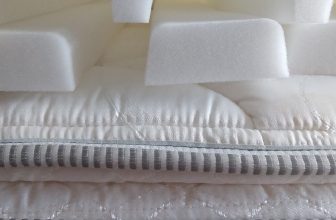How to Dispose of Bed Bug Mattress
As a homeowner, having bed bugs in your mattress can be one of the most distressing and disruptive experiences you’ll ever face. Not only do these insects leave unsightly marks on furniture, walls, and any other surfaces they come into contact with, but their ability to procreate quickly means the problem can easily balloon out of control if left untreated.

To rid yourself of them permanently – and stop them from taking over your home! – it’s important to take the right steps when disposing of a bed bug mattress. In this blog post, we’ll go through all the necessary steps for how to dispose of bed bug mattress safely and securely so that you can rest easy knowing your problem is taken care of once and for all.
Can a Mattress Be Saved after Bed Bugs?
The answer to this question is not a simple one. Unfortunately, it is possible that a mattress may be infested with bed bugs and not show any signs of it. Bedbugs are known to hide in furniture, clothing, and mattresses, so the presence of an infestation can go undetected for some time. This means that even if you don’t see any evidence of bed bug activity on your mattress, there’s still a possibility that it has been contaminated.
If you have discovered or suspect a bed bug infestation, the first step should be to contact a professional pest control company. They will be able to carry out an inspection and recommend the best treatment plan for eliminating the bed bugs from your home. Depending on how far the infestation has spread, it may not be possible to save your mattress.
The best option for dealing with a bed bug-infested mattress is to have it disposed of in an environmentally friendly manner. Most municipal governments and pest control operators offer services that will help you properly dispose of the mattress, or they can recommend a local company that specializes in this type of disposal service.
For this reason, it is important to continue treating the mattress with insecticides and steamers in order to ensure that any remaining bed bugs are killed off. In some cases, it may also be necessary to purchase a new mattress if the infestation is particularly severe or has gone on for an extended period of time.
Although this can be costly, a new mattress will give you the peace of mind that comes from knowing you won’t have to worry about dealing with a bed bug infestation again.
8 Methods on How to Dispose of Bed Bug Mattress
1. Mattress Covers
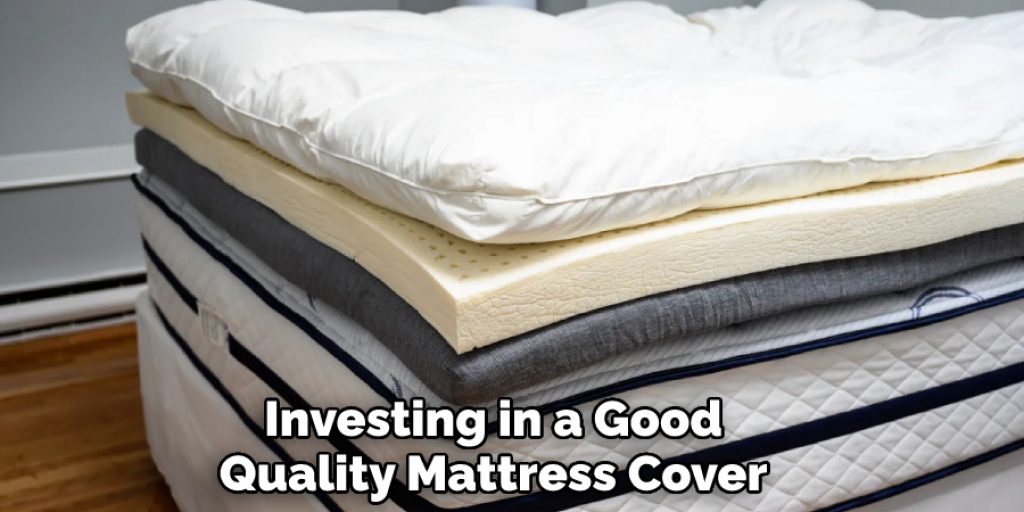
One of the best ways to get rid of bed bugs is to protect the mattress from them in the first place. Investing in a good quality mattress cover can help reduce or even eliminate infestations. The fabric should be strong enough to prevent the bugs from getting in while still allowing air to circulate and keep the mattress dry. Make sure that there are no rips or tears in the fabric, as this can allow bed bugs to enter. Although they are relatively cheap, mattress covers can be a great investment in keeping your mattress free of bed bugs.
2. Vacuuming
Vacuuming is an effective way to remove bed bugs from mattresses and other furniture. Vacuum the mattress thoroughly to remove any living bed bugs and eggs. Make sure to get all cracks, crevices, and seams.
Dispose of the vacuum contents in a sealed bag to avoid spreading the infestation. To ensure all bed bugs are removed, you may need to repeat this step several times. If possible, use a steam cleaner afterward, as the heat will kill any remaining bed bugs. However, be careful not to damage the mattress with excess heat.
3. Steaming
Steaming is another effective way to kill bed bugs and eggs. Use a handheld steamer, or rent one from a supply store. Consider using the steamer in conjunction with other methods like vacuuming and pesticide treatments. For best results, direct the steam at seams and creases on mattresses, furniture, curtains, and other places where bed bugs like to hide.
Make sure to steam the entire mattress, including any folds, tufts, and crevices. It is important to be careful when using a steamer so as not to burn yourself or damage other items in the home. If you are dealing with a severe bed bug infestation, it is best to consult a pest control professional for an opinion on the best way to treat your mattress.
4. Washing in Hot Water
Washing your mattress in hot water is an effective way to kill bed bugs. Place the mattress in a washing machine and wash it on the hottest cycle available. Be sure to add laundry detergent to break up any oils that may be present. Once the washing cycle is complete, place the mattress in a dryer and set it to high heat for at least 30 minutes.
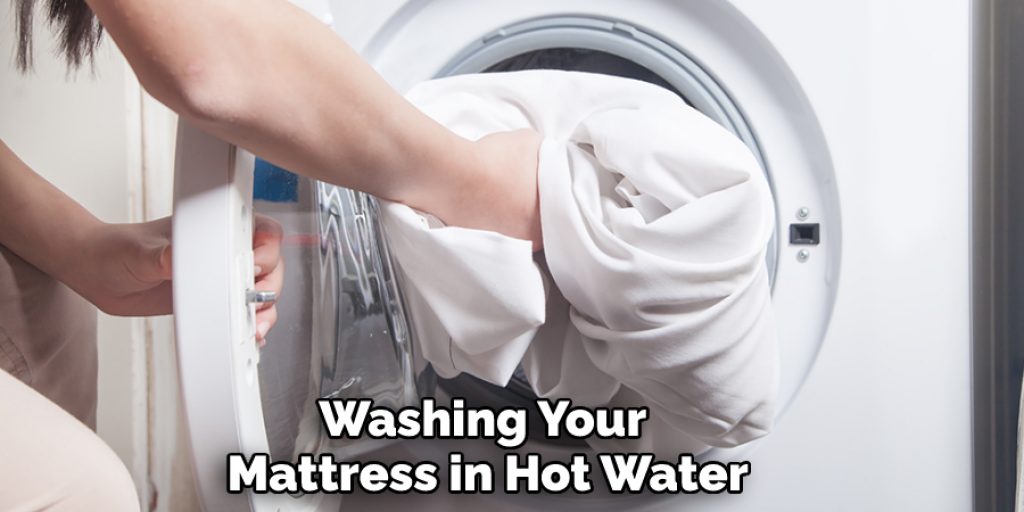
The combination of high temperatures from both machines is sure to kill any bed bugs or eggs that may be present. If a washing machine and dryer are not available, use a steam cleaner with hot water instead. The high temperature of the steam will treat the mattress and kill any bed bug infestation.
5. Dry Cleaning
Dry cleaning is an effective way to kill bed bugs from the mattress and other textiles. In this method, items are placed in a special dry cleaning machine and heated to a high temperature of over 120°F (50°C). Dry cleaning kills all stages of the bed bug life cycle, including eggs, nymphs, and adult bugs.
If dry cleaning is not available or practical for your situation, you can also dry clean fabrics and other items using a high-temperature dryer. Make sure to set the temperature at least 120°F (50°C) for at least 30 minutes. This method is effective in killing bed bugs but may cause your fabric/textile to shrink or become damaged due to the intense heat.
6. Freezing
Freezing is an effective way to kill bed bugs and eggs. First, find an area of your home that is normally cold, such as a basement or garage. If you don’t have an area like this at home, then you can rent a storage unit or freezer to keep the mattress in for several days.
Make sure the temperature inside the storage unit stays below 0 degrees Fahrenheit or minus 18 degrees Celsius. Check the temperature regularly with a thermometer to make sure it stays cold enough.
Leave the mattress in the cold storage unit for at least 4 days to ensure that all of the bed bugs and eggs are killed. Once you’re sure everything is dead, take the mattress out of storage and dispose of it properly.
7. Spraying with Insecticide
Spraying your mattress with an insecticide is another option for getting rid of bed bugs. It can be effective, but it has to be done correctly and safely. Make sure you read the directions on the insecticide before you use it to make sure you use it the right way. You should wear protective gear like a face mask when spraying, too, as the fumes from the insecticide can be dangerous.
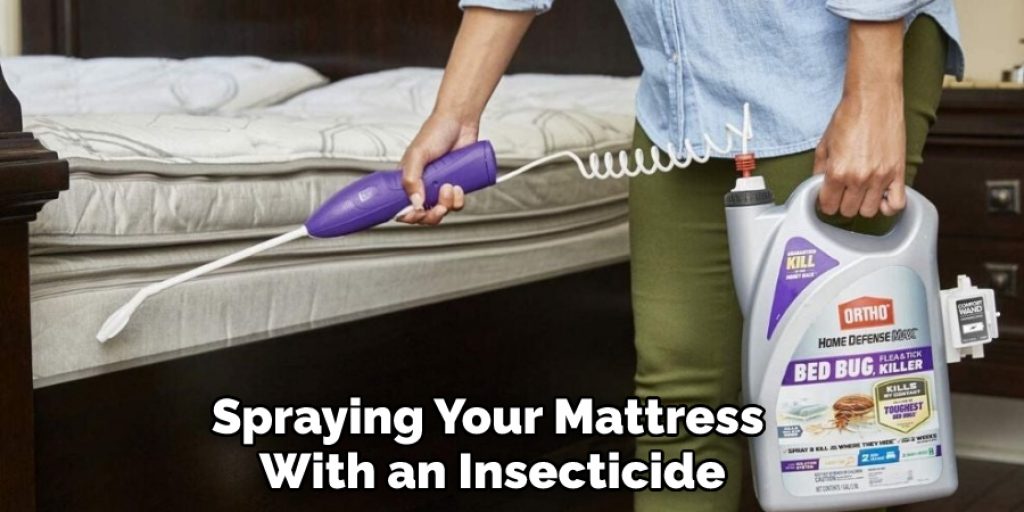
You may need to repeat the spraying process multiple times to make sure you get rid of all the bed bugs. Be sure to keep your windows open when spraying and leave the room for a few hours after you’re done. This will help the fumes dissipate safely.
8. Cleaning Your Mattress
After you have vacuumed, steam treated, or heat your mattress, it is important to clean the surface of your mattress. You can do this with a mixture of water and detergent. Use a soft-bristled brush to scrub the area in circular motions until all of the dirt and debris are removed. Make sure to dry the mattress thoroughly before moving on to the next step.
Things to Consider When Disposing of Bed Bug Mattress
1. Consider the local regulations for disposing of mattresses, as this can vary from one location to another. Be sure to check with your local waste authority or municipality to find out what’s allowed in your area.
2. If a mattress is heavily infested, it should be wrapped properly prior to disposal. This will help avoid spreading bed bugs to other parts of the home or to neighbors.
3. Consider using a mattress disposal service such as 1-800-GOT-JUNK? They specialize in dealing with infested mattresses and disposing of them safely and properly.
Conclusion
Dealing with a bed bug infestation can be daunting, to say the least. It can feel stressful and overwhelming, especially when trying to figure out how to dispose of the infected mattress. However, if you take the proper precautions, it doesn’t have to be that way.
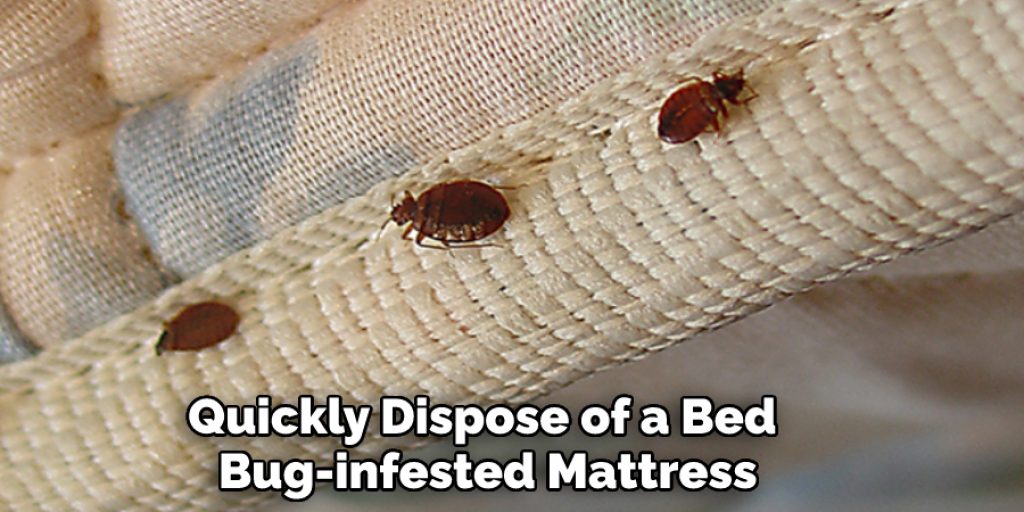
With the right steps, including cleaning infested bedding and furniture, laundering or dry cleaning all fabric materials, removing clutter from your home, and sealing and wrapping the mattress securely before disposal, you can safely and quickly dispose of a bed bug-infested mattress.
So don’t delay; follow these instructions now in order to get started on eliminating this problem straight away! How to dispose of bed bug mattress properly today!



